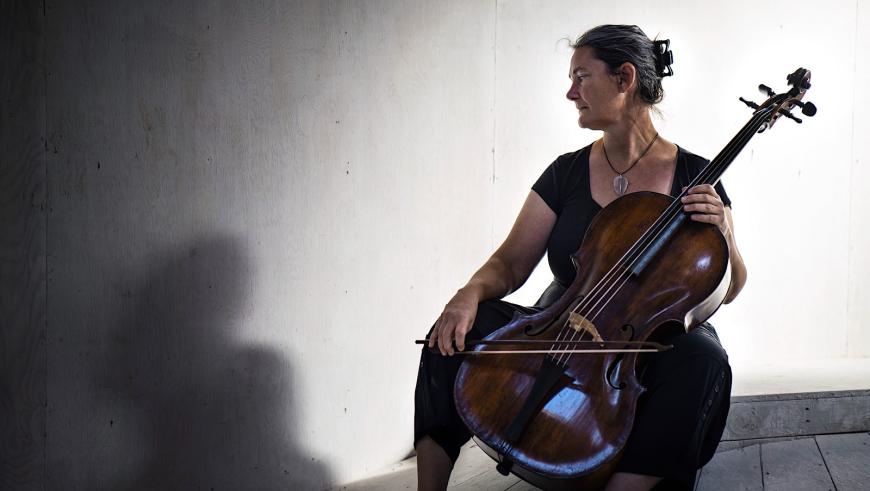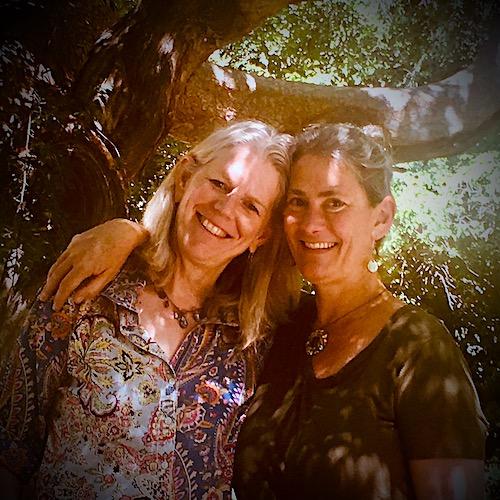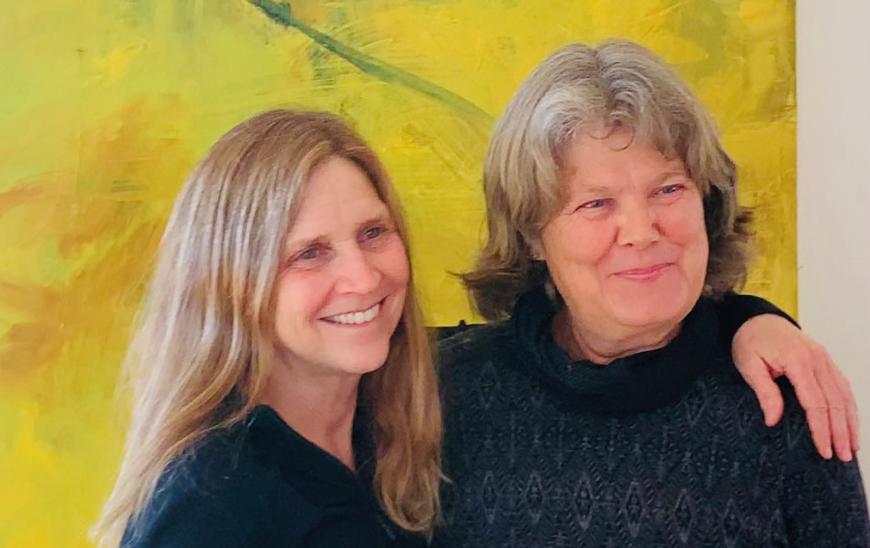
Cellist Monica Scott, a former Crowden School faculty member, who quit over the school’s recent debacle, has been busier than ever, teaching, composing, performing, organizing. “I’m happy both with my flourishing cello studio, and especially with the creative work I have been doing with three other artists, the results to be on view in the Paul Dresher Studio in Oakland on the second weekend of February.” Admission is free at 4:30 p.m. Feb. 12 and 13, but the studio has limited seating, especially during the pandemic.
Out of conversations she had during the pandemic came a multimedia collaboration called Lightfast, which includes live musical improvisation, sculpture installations, projections, and readings.

Participants are Scott, known in the Bay Area as the cellist of the piano-cello duo martha & monica (with pianist Hadley McCarroll); Christel Dillbohner, visual researcher, associate of the Institute of Cultural Inquiry, and co-creator with Danae Mattes of CircumNavigators; novelist and short story writer Sylvia Brownrigg, author most recently of Pages for Her and Invisible Countries; and Danae Mattes, visual artist, whose other collaborations include work with Hope Mohr Dance and jazz musician Henry Threadgill.
“The collaboration evolved,” Scott says, “as our explorations went further, together and independently, and after exchanges of ideas, sketches, and readings. Early discussions covered literature, politics, environmental issues, cultural history. Over time, the different forms of layered sounds, words, and physical marks became the foundation for a multimedia collaboration called Lightfast.
“We delighted in the ways voices and gestures spontaneously interacted, and over time we curated a series of images that became Lightfast’s two short films, Overture and Currents and Cadences. Live improvisation on a cello, and recorded layers of instrumental and natural sound as well as spoken words emphasize a full sensory experience, which considers emotional states of being and humanity’s relationship to nature.
“I felt it so extraordinarily powerful to work with artists from other genres — we think of ourselves as a quartet — each with a voice, each with individual things to introduce and share with the group, and discussions led to more intricate collaboration. We have found a way of communicating that seems to weave together all our ideas and each piece, whether musical, written, or visual, seems utterly connected with the other elements around it.
“I think it would be fair to say that withdrawing from ‘normal’ life during the pandemic enabled us to form this quartet. And we’re all so jazzed by it, that we see the piece Lightfast as just the first of many largescale collaborations.

Of her own compositions, Scott says, “they are rather un-categorizable — the 17 Generations that is part of the film Lightfast is a cello-only version of a piece I also performed with Matt Ingalls at Old First last summer. I’m also improvising on Baroque cello for the Lightfast performance in February.”
Dillbohner and Mattes generated the images by first creating installations of reflective, translucent, and opaque materials that were then overlaid with projections. They describe the play with scale, dimension, and distortion adding to the dreamlike quality of the filmic sequences.
Scott’s compositional technique is sculptural, and her piece, 17 Generations, heard in Currents and Cadences, is a collage of musical gestures and motifs interwoven into a dense, layered texture. Brownrigg’s short fictional pieces have four voices reflecting on the seen and the unseen, a path in the wilderness, and the ambiguities of shadow, water, and light.

